The Wonderful World of Wordless Books
Posted by Remya Padmadas on April 25, 2016A 'wordless' picture book? Sounds like an oxymoron doesn't it? Well, wordless books can actually be a great addition to your reading shelf - virtual or otherwise.
Wordless books are something to share with children of all ages. They're a fantastic way to explore, engage and educate children and vocabulary, storytelling skills and creative muscles can be stretched with wordless books. But best of all, and most importantly, worldless books are a sheer joy to behold!
Last year, the #6FrameStoryChallenge was launched with the core idea of creating a rich illustration bank for StoryWeaver and thereby creating a repository of simple, wordless stories told in 6 frames. At the time, the Pratham Book's blog wrote this:
'In the 1980s and 90s, the National Book Trust had published a few precious wordless picture books. Over the last decade, we haven't seen as many of these being published in India and so the time seems ripe for this flood of beautiful wordless stories. Not only will these stories cut across language barriers, but they will also inspire young readers to weave their own stories around the illustrations, offering ample room for multiple re-imaginings and unique perspectives.'
You can read the rest of the post here.
Wondering what to do with wordless stories?
The StoryWeaver team has put together some ideas for you, incase you're wondering how to enjoy a wordless books with your children:
- Explore the story in a leisurely manner. Draw attention to the details - the expressions of the characters, setting, colours, etc. 'Out in the Garden' is a worldless story created with Sonal Gupta's illustrations that lends it self beautifully to this activity.
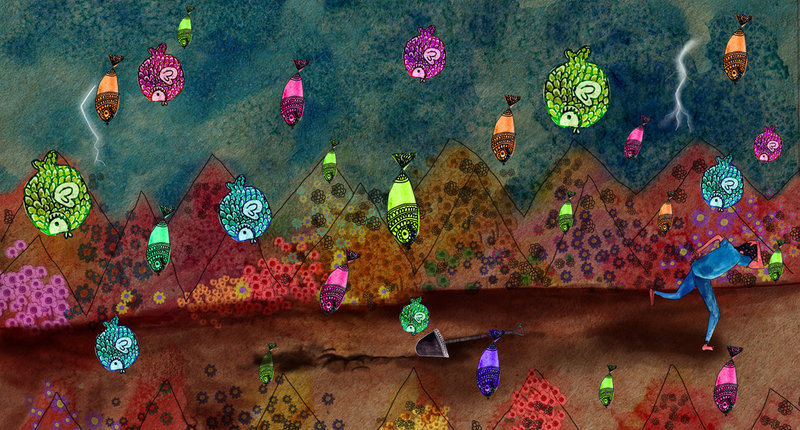
- Encourage the child to build her own story. If the story is being shown to a group of children, you could ask each of them to contribute a sentence or two for each illustration. Take joy in exploring each illustration and build the story as you go along.
- Use themes explored in the story to start a discussion. For instance, in the story, 'The Birthday Party' illustrated by Megha Vishwanath you could ask children about what they did for their birthday, or even how they help out at home.
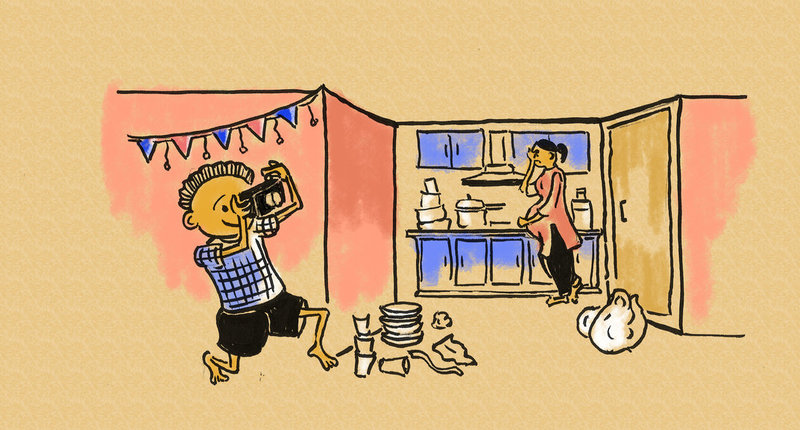
- Encourage children to create 2-3 different stories using the same set of visuals. This will help them explore their own creativity! Here are some lovely illustration sets to get you started!
Muhammed Shafi's simple illustrations of a man in a boat. You can find more illustrations from him here.

Aritra Roy's whimsical bear and its adventures with a parachute. You can see the other illustrations from this set here.
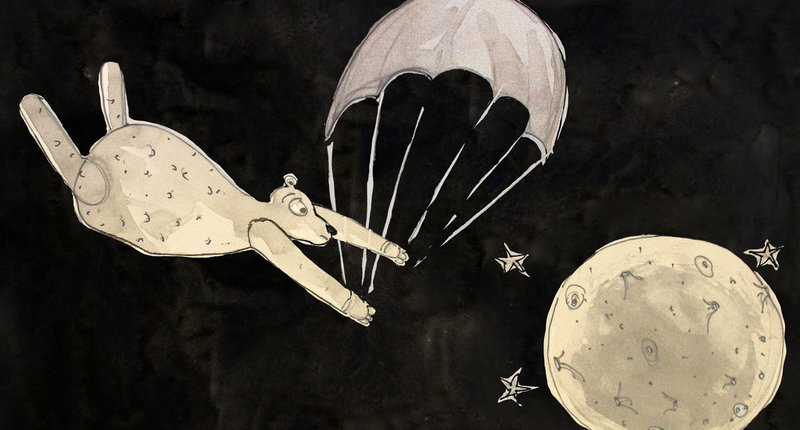
If you'd like to see more amazing illustrations and inspirations for wordless stories, follow us on Instagram and watch our for our #6FramesFriday!
We hope you enjoy reading and creating your own wordless picture books and sharing them! Do leave us a comment below or on our Twitter and Facebook page with #WordlessPictureBook.
Be the first to comment.One book, two classrooms, three hard truths
Posted by Remya Padmadas on September 20, 2017Nandita Jayaraj is a science writer and storyteller based in Bengaluru. She co-founded 'The Life of Science' project where she travelled to laboratories around India tracking the lives and research of the scientists who work in them. She has written Arya in the Cockpit and Raju's First Flight for us and took these stories to two classrooms in Mangalore. Read on to find out what her experiences were.
When a friend invited me to Mangalore to read out my first ever children’s book - published on Pratham Books’ StoryWeaver platform - I said yes without thinking twice. After all, I’d grown up reading to my little brother and now my nephew and each story I write or edit is accompanied by many sessions of reading out aloud to myself, so how different could it be in a classroom? It was only a day or two prior to the event, when I actually begun to envision the scenario that awaited me, that I started to get somewhat concerned - maybe I wasn’t as prepared for this as I’d thought.
There were two storytelling sessions I’d agreed to do - one was at Early Learning Centre, a Montessori school run by Sonia and Vijay Moras in Mangalore, and the other one was at St. Peter Higher Primary School, a nearby government school which ELC supports. To my humongous relief, the day went very satisfactorily. Both sets of kids were in that early part of childhood when they are easily enthralled and young enough that I didn’t feel self-conscious about clowning around. ELC did a fantastic thing by printing out copies for all the children so they could look at pictures and take the story home with them.
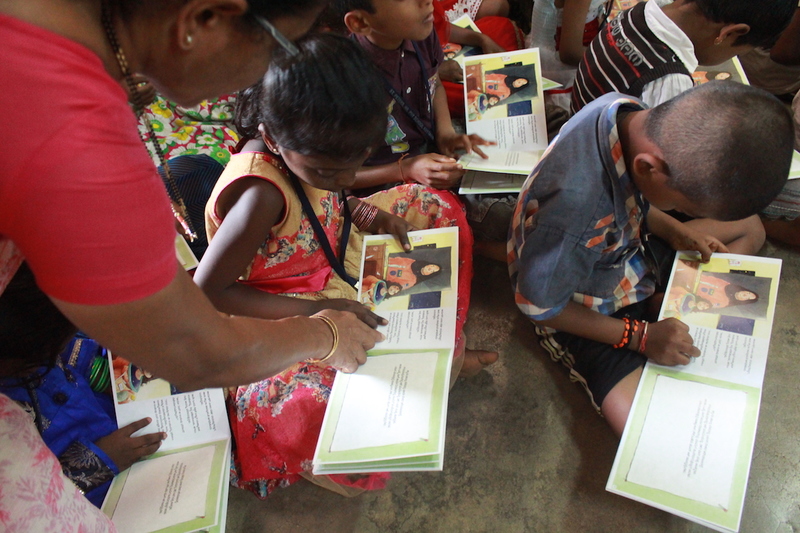
As well as the day went, I couldn’t help but go back home feeling thoughtful and a little guilty about all the preconceived notions I had been harbouring about the way children react to stories. While writing and editing children’s stories, I have always tended to base my instincts on the experiences I’ve had reading out to the children in my family. The Mangalore experiences definitely taught me a thing or two and I know I this will impact the way I deal with children’s content in the future.
What I read out to the kids was actually a pair of stories (which will eventually be two parts of the same book) - Arya in the Cockpit and Raju’s First Flight. I had written these for StoryWeaver under the theme of women who “fly”. The former follows the life of Arya as her dream to take to the skies evolves as she grows up. The latter works sort of as a primer to the second- it features Arya’s younger brother who is looking forward to take his first ever aeroplane ride on his way to meet his sister after a period of separation. This story ends with a twist - as it is revealed that his sister is the pilot of the very plane he is about to travel on.
This is where I learned my first lesson - what I fancied to be a clever twist that makes for a great story needn’t work for children with the same dramatic effect as I’d imagined. It works for children reading the book themselves, but in a classroom setting with younger kids who are being told the story, a realised I had to go a step further - be a bit more explicit, more grandiose - as it was, the text was too subtle.
These kinds of improvisations are what make a great storyteller, and I was humbled by the realisation that I was far from one. Nevertheless, I was able to catch on to this just early enough in the reading to add in some elements and ensure that the kids understood what was going on. The sister wasn’t just waiting for Raju at the end of his flight, she was in the flight, flying the plane! I may not have gotten the ‘oohs’ and ‘aahs’ I was going for, but they were amused enough - phew!
The second big lesson I learned was the presumptuousness with which I assumed a story written in English will be enjoyed just as much by non-speakers of the language. The government school was a Kannada medium one, but I was told that the students would be in in 2nd and 3rd grade and so would have a basic understanding of English. Nevertheless, ELC had organised for one of their teachers, Jayashree Guruprasad, to read out the Kannada translation (by Brinda N Rao) after I was done reading the English one.
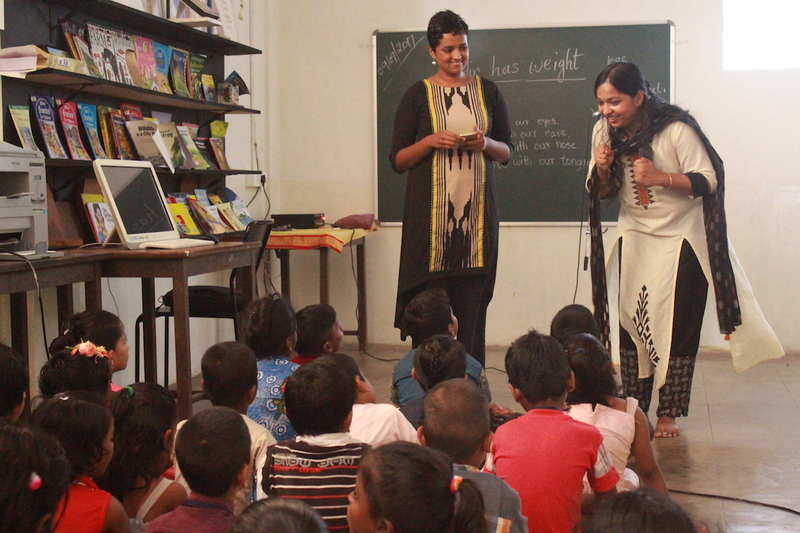
While the classroom was being set up I tried to break the ice with the kids and quickly realised that their level of English was nowhere near my understanding of ‘basic’. I suggested to Jayashree that she translate side-by-side instead of at the end and that made a big difference. The children were able to appreciate the flow of the story much better - if I had dumped that entire load of English on them, they would surely have been lost and bored, just as I would have if someone read out a whole story to me in Kannada (which I would argue I have a somewhat basic understanding of). The books given to these kids were the Kannada version. Even though it worked out, I came out with an enhanced appreciation for short sentences. There was also an opinion that the translation was somewhat too literal and the language ‘can be more colloquial, the way we speak’. I promised to pass on the feedback to Pratham Books.
My final lesson was the stark differences in lifestyles between the two groups of kids. At both venues, I started off the storytelling with talking about aeroplanes in general. These conversations with the kids before commencing the book really helped me gauge the audience. As expected, at the government school, none of the children had ever been in or even seen a plane up close - though they all were very excited by the prospect of travelling in one some day. They seemed unfamiliar with terms such as ‘cockpit’ and ‘airhostess’, so when I told the story, I avoided some words.
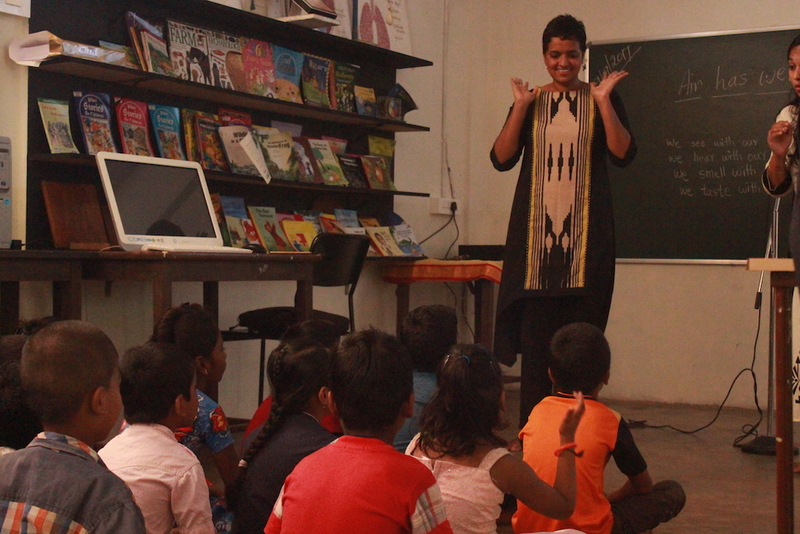
At the Montessori school, a majority of the crowd had been inside an aeroplane and were much more knowledgeable about aspects of flying that I would most definitely not have known in their age. Quite a few were familiar with concepts like the cockpit, the retractable wheels of an aircraft, etc., and many were enamoured by possibilities like the plane crashing (this came up an alarming number of times during the reading)!
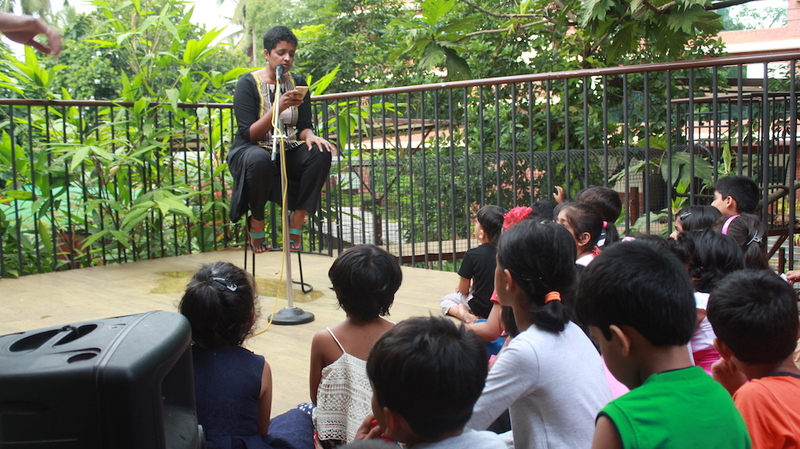
There was so much to take away from the storytelling experience and I definitely think producers of children’s content - especially ones starting out - have a LOT to gain by reading in different types of classrooms to see for themselves whether what we think works is actually working. Even if to a certain extent I knew of these good practices and my editors at StoryWeaver have emphasised it to me repeatedly, it only really hit me when I saw the proof in front of my eyes. And as a complete storytelling newbie I can confirm that this is not as scary as it sounds and if you make an effort, chances are the young kids will love you anyway.
(Photos by Girish.)
Be the first to comment.Translation Musings
Posted by Remya Padmadas on September 29, 2018We're very fortunate to have such an wonderfully enthusiastic community of readers, authors, translators and illustrators. This International Translation Day, we'd like to share with you the reflections of a group of translators who attended our Bengali Hackathon earlier this year. The contributors to this article all belong to the student community. While Sreejita Majumdar did her schooling from Patha Bhavan, graduation from Calcutta University and post graduation diploma in Public Relations and Multimedia. She has also done an internship with the news channel 24 Ghanta and is currently learning Spanish from JU. Her hobby is painting and her passion lies in football, films and animals. Ankita Basu has done her schooling from B.D Memorial and is currently pursuing her graduation from Calcutta University. She's passionate about films, books and writing. Banhi Sarkar has done her schooling from Gokhale Memorial and graduated from Calcutta University. She loves films and books as well and is interested in writing.
A bunch of us got the unique opportunity to take part in a translation workshop as arranged by StoryWeaver on the weekend of 30th June and 1st July, 2018. The group included people from diverse backgrounds, such as school teachers, students, college professors and language enthusiasts. We had a great time translating quite a few stories over the two days and decided to give a feedback on the same so that it helps in further improving the translation workshops to be held in future.
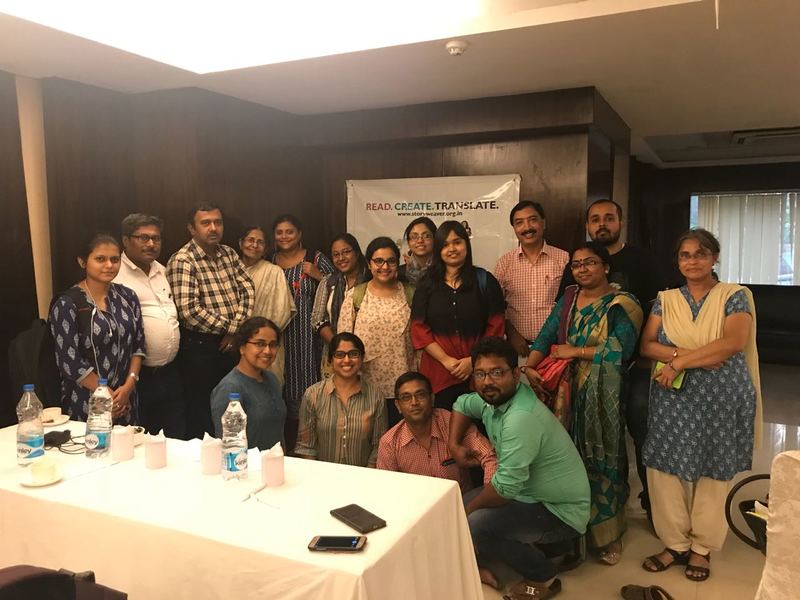
It was a very unique experience in terms of both learning and working on the given stories set to translate. Even for participants in the group who have been to other translation workshops before, this one was more engaging and enjoyable with a much more prompt delivery of the assigned work. We all got to meet a lot of new people with the same interests and passion in the field of translation. The fact that the participants ranged from school teachers to college professors to students made it a very dynamic group to work with. The coordinators provided a very free and relaxed environment, which made the experience all the more pleasurable.
It was definitely a challenge to work on children’s stories. None of us had realized previously that translating for adults and translating for children could be two completely opposite poles of the same spectrum. But working in small teams and pre-assigned two to three stories eased the way. We could engage in discussions, ask for advice when in confusion and help out others, all within the stipulated time. The two days period seemed to fly by, and though it was tiresome, it was equally productive and satisfying.
However, we did face some challenges in the way which led us to discussions on ways to improve the experience even further for future translators. There were certain aspects we all agreed on regarding the difficulties we faced. We realized since our target audience is children, care needs to be taken to make sure that the words we choose not just have literal significance but that they are both easy and understandable and can fall under the regular vocabulary of a child. For example, in this story there were quite a few words that had to be translated keeping in mind the vocabulary of the children of level 2 in the Bengali translation of The Louse's New House.
The Bengali language is so vast, rich and diverse that it becomes a further challenge to aptly translate all kinds of work from English to Bengali across the entire expanse of its existence. Throughout Bengal, there exists numbers of dialects and forms of the language. As a result, it is important to keep in mind that the translated work should be universal in the sense that it can appeal to a child of both the urban city and the rural village within the same state. For example, we faced situations where a particular word may sound totally innocent on hearing at first, but on further probe, we discovered it may have a negative connotation in a different dialect. So a detailed knowledge about such contradictory words and situations need to be there within the team for effective translation. Also, in the following story for example, there was much pondering over the correct translated word of ‘smooth’ in Bengali that could rightfully carry over the intended meaning from the English to the Bengali version of the story Stick Your Tongue Out!
There were quite a few words related to sound that more or less all the teams came across in one or all of their stories during translation. One such example is Miss Laya Starts Her Fantastic Motorbike in Bengali. That’s when we faced difficulty to find the exact word in Bengali that would correspond to the one already used in English. Since it’s quite common to come across such words in children’s stories, we feel it would be great if there was a reference book where all commonly appeared sound words could be listed along with their regional counterparts and their varying connotations. That would save a lot of time and confusion the next time we translate any story containing such words.
Since this is truly a one of a kind endeavour, it would be highly appreciated if more publicity could be done regarding this platform. More schools need to be aware of it so that they can include the exercise of reading translated stories to their children across different classrooms and thereby lead to a much wider readership. As already discussed at the end of our workshops, many teachers who participated in it decided to take it forward to their schools and start a curriculum based on reading of these translated stories to their students.
It would be very effective if the future workshops could involve people from varying regions and state, in short a cross-regional/national workshop where teachers, translators and writers could participate and interact on a much wider scale to bring about more and more significant children’s stories to light. This could lead to a discovery of more unique works, which usually remain confined within the geographical boundaries, and can reach more children beyond language and cultural barriers.It’s important to keep a balance between the variety of stories being translated and worked upon for children. New ideas and concepts are always welcoming, but we could also work on the classics in each language which may be quite famous in that particular language and thus known to the children of that mother tongue but perhaps remain unknown in other languages. This could help translate the works of authors in regional languages as well.
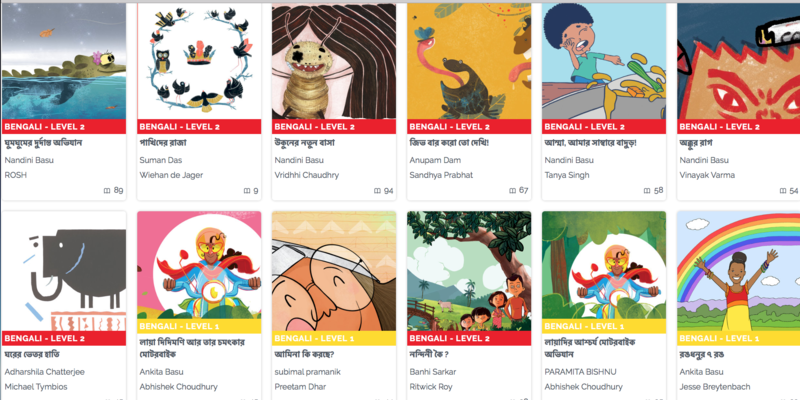
In short, it was a beautiful and cherishable experience that we all hope to continue beyond the workshop in future. We wish all the very best and give our warm wishes to the entire team of StoryWeaver and Pratham Books for their future endeavours.
You can read all the stories translated at the hackathon here.
Be the first to comment.